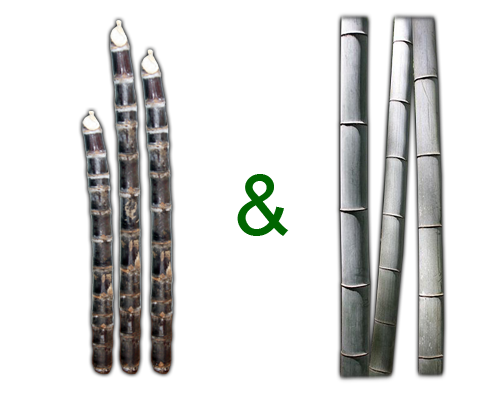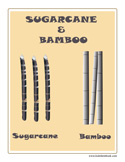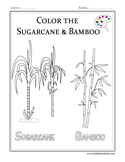DESCRIPTION: Sugarcane
Sugarcane, or Sugar cane, is any of six to 37 species (depending on which taxonomic system is used) of tall perennial true grasses of the genus Saccharum, tribe Andropogoneae, native to the warm temperate to tropical regions of South Asia.
They have stout jointed fibrous stalks that are rich in sugar, and measure two to six metres (6 to 19 feet) tall. All sugar cane species interbreed, and the major commercial cultivars are complex hybrids.
Sugarcane belongs to the grass family (Poaceae), an economically important seed plant family that includes maize, wheat, rice, and sorghum and many forage crops. The main product of sugarcane is sucrose, which accumulates in the stalk internodes. Sucrose, extracted and purified in specialized mill factories, is used as raw material in human food industries or is fermented to produce ethanol. Ethanol is produced on a large scale by the Brazilian sugarcane industry.
Sugarcane is the world's largest crop. In 2010, FAO estimates it was cultivated on about 23.8 million hectares, in more than 90 countries, with a worldwide harvest of 1.69 billion tonnes. Brazil was the largest producer of sugar cane in the world. The next five major producers, in decreasing amounts of production, were India, China, Thailand, Pakistan and Mexico.
The world demand for sugar is the primary driver of sugarcane agriculture. Cane accounts for 80% of sugar produced; most of the rest is made from sugar beets. Sugarcane predominantly grows in the tropical and subtropical regions, and sugar beet predominantly grows in colder temperate regions of the world. Other than sugar, products derived from sugarcane include falernum, molasses, rum, cachaca (a traditional spirit from Brazil), bagasse and ethanol. In some regions, people use sugarcane reeds to make pens, mats, screens, and thatch. The young unexpanded inflorescence of tebu telor is eaten raw, steamed or toasted, and prepared in various ways in certain island communities of Indonesia.
In India., between the sixth and fourth centuries BC, the Persians, followed by the Greeks, discovered the famous "reeds that produce honey without bees". They adopted and then spread sugar and sugarcane agriculture. A few merchants began to trade in sugar-a luxury and an expensive spice until the 18th century. Before the 18th century, cultivation of sugar cane was largely confined to India. Sugarcane plantations, like cotton farms, were a major driver of large human migrations in the 19th and early 20th century, influencing the ethnic mix, political conflicts and cultural evolution of various Caribbean, South American, Indian Ocean and Pacific island nations.
DESCRIPTION: Bamboo
Bamboo is a tribe of flowering perennial evergreen plants in the grass family Poaceae, subfamily Bambusoideae, tribe Bambuseae. Giant bamboos are the largest members of the grass family. In bamboos, the internodal regions of the stem are hollow and the vascular bundles in the cross section are scattered throughout the stem instead of in a cylindrical arrangement. The dicotyledonous woody xylem is also absent. The absence of secondary growth wood causes the stems of monocots, even of palms and large bamboos, to be columnar rather than tapering.
Bamboos are some of the fastest-growing plants in the world, due to a unique rhizome-dependent system. Bamboos are of notable economic and cultural significance in South Asia, Southeast Asia and East Asia, being used for building materials, as a food source, and as a versatile raw product.
|

















